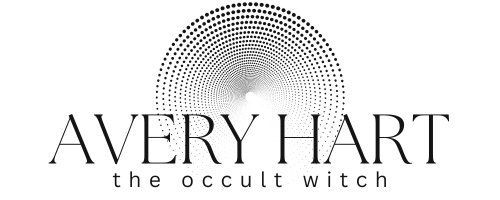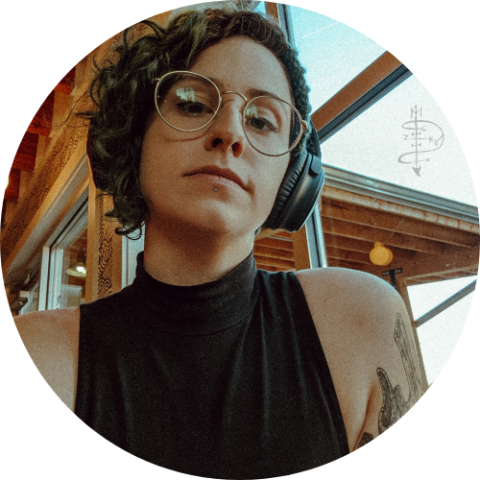This is Part 2 of this series, read Part 1 here >>
Last week we talked about why witchcraft doesn’t need to be costly to be effective and exactly how this damaging idea has made its way into the craft. While it’s easy to spout rah-rah, feel-good sentiments all day long, that’s not going to help you to create a magical practice that doesn’t break the bank. For that, we need some actionable steps to transition from the all too common commercial witchcraft that we’ve all been sold into a new (or in this case, old) form of witchcraft that crafts power rather than buying it.

1. Narrow Your Focus
One of the easiest ways to make your witchcraft cheaper is to narrow the focus of your practice. This can be done in many ways. You could focus your practice around a specific tradition. You could narrow your focus to only one or two forms of spell casting that are particularly effective for you. You could narrow the types of magic that you focus on currently, such as only focusing on money magic or love magic for a while. You could even narrow your practice by choosing to only work with certain tools.
This approach is not ideal for everyone. For newer witches, it’s best to stay a bit broader with your exploration of the craft simply to avoid falling into the trap of never finding the kind of magic that’s right for you. If you’ve been practicing witchcraft for a year or two, you can start to narrow your craft down a bit. Try not to think of this as a limitation or a restriction on your craft, but rather think of it as a constructive boundary. In the same way that some artists will spend time working only with one medium or even sticking with a single color, you can greatly improve your effectiveness with the magic that you already practice by narrowing your focus and choosing to use a few constructive boundaries.
This might look like only working with the plants and herbs that you have growing in your garden. This might look like only working with the tools that you have right now. This might look like making an effort to finish reading all the witchcraft books that you have before seeking out new resources. You might even consider choosing a specific witchcraft path like kitchen witchcraft or divination to pursue for a time.
Keep in mind that these restrictions are not meant to be indefinite. There’s no need to remain in a hyper-focused state if it’s not serving you well. Give narrowing your focus a shot but when it’s run its course, feel free to expand your practice again or to choose a new focus. This is only meant to give you a reprieve from the urge to be constantly buying new things, learning new things, or chasing the newest magical fad.
2. Find A Cornerstone Practice
I’ve spoken about cornerstone practices many times. A cornerstone or foundational practice is a repeatable magical practice that you use as an anchor point for the rest of your craft. One very common example of this would be full moon rituals. A full moon ritual is periodic in that it happens every month, it is a focal point that allows you to reassess where you are and what you need, and it is a practice that is versatile enough that it can serve a variety of needs depending on where you are in your life. Other cornerstone practices could be things like a weekly cleansing ritual, working with one of the planets on the appropriate day of the week, an ancestral veneration practice, or even a jar spell that requires weekly upkeep and tending.
The point of a cornerstone practice is that it allows you to grow and deepen in your craft through simple repetitive rituals. It keeps you in touch with your magic and interacting with it on a very regular basis so that you never feel like you’ve “lost touch” with your witchcraft. This also gives you a solid framework to work all of your other magic within. If you have a weekly ancestor veneration practice, then you can take many types of magical intent to them for help in achieving those goals. If you perform a full moon ritual, you can use that time for setting intentions and casting spells for what you want to draw into your life. If you take a weekly magical bath, then you can adjust the purpose of that magical bath to suit whatever kind of magic you want to work that week.
Finding a magical cornerstone can be a game-changer! There’s no right or wrong way to go about figuring out your own cornerstone practice. All you need to do is make a list of practices that meet the following criteria.
- The practice must be periodic, in other words, it needs to be something that repeats fairly reliably. This could be monthly, weekly, or daily, or you can pick a mix of these!
- The practice should serve your magical goals. If you don’t care about aligning your magic with the lunar cycle, then don’t use a full moon ritual as your cornerstone! If you don’t like working with spirits, then don’t make an ancestral practice your cornerstone. You get the idea.
- The practice should be easily accessible to you. The idea here is to make your magic cheaper and easier to access! Don’t pick a cornerstone practice that requires a ton of money, time, or other resources that you don’t have available for it.
Once you’ve made this list, just start trying various cornerstone practices. Pick one and give it a shot. If it doesn’t work for you, you don’t like it, or it just doesn’t feel right in your practice, don’t worry about it. You can try another cornerstone and continue doing this until you find something that works for you. Many witches who use this process will end up with more than one cornerstone practice. This is great! It gives your craft an abundance of continuity and it allows you to feel like you are really living your craft rather than practicing it as a satellite to your real life.
3. Work With What You Have
This one is pretty simple, work with what you already have available to you. I like to call this “home thrifting”. Take a look at what you already have around you. What magical tools do you have? What non-magical tools do you have? I mean, who needs a cauldron when you have a perfectly good soup pot! What plants grow in your local environment? You might be surprised at the diversity of plants and the kinds of magic that you can work with them, even plants that are considered weeds. What kinds of stones can you find if you go out for a hike? Where I live, it’s very common to be able to find flint and little sea fossils all over dry creek beds when you go out hiking. These can be used in magic! What craft supplies do you have? Do you have paint? Twine? An Xacto knife? All of these things can be used for a variety of spells. Don’t have tarot cards? Try bibliomancy with any book on your bookshelf. Make a pendulum out of your favorite necklace.
Get your mind out of the rigid thinking that only witchcraft tools can be used for witchcraft. You can use just about anything for witchcraft! Look at the things in your surroundings with new eyes. What other purposes can they serve? What new ways can you see to use the mundane?
4. Get Goal-Oriented
One of the reasons a lot of witches flounder and end up spending way too much money when they’re learning the craft is that they don’t have a clear idea of their goals. When you have no idea what you’re trying to accomplish with your magic, it’s easy to end up scattered. I don’t need to tell you that a scattered practice can get expensive quickly. If you don’t know what you want and you’re bouncing from one type of magic to another, from one book to the next, from one teacher to the next, that’s likely to get pricey! By choosing your goals carefully, you can narrow the field significantly and spend a lot less time and money chasing after every new idea you come across.
An example of goal-oriented witchcraft would be choosing to focus your magic on increasing your abundance and flow of money. This means that until you’ve achieved your goal, your primary focus in your witchcraft is money magic. This could come in many forms, from job spells to luck spells, to quick money magic, but it gives you a target to aim for. This means that the only resources you need to seek out are resources that teach you about money magic. This means that the only tools and ingredients you need are those that you require to work money magic.
You can get pretty creative within the realm of goal-oriented magic and experiment a lot, but choosing what matters to you and focusing your magic there will prevent you from aimlessly wandering through different kinds of magic and losing your money in the process.
5. Only Buy What You Need
This might seem like a no-brainer to some of you, but I have met far too many witches who have complete ritual toolsets that they never use. I mean, do you really need an athame, a boline, a chalice, a pentacle, a wand, a robe, a thurible, a cauldron, a girdle, a million fancy herbs, and a huge altar table? Unless you’re quite advanced and planning to practice a lot of ceremonial magic, probably not! It’s easy to find list after list of tools that every new witch “must” have but in reality, you don’t need any of those things. You could do magic with nothing more than a single white candle or a piece of paper and a pen.
Throw out those lists of tools and start only buying the things you need. Don’t buy a chalice if you have no idea what you’re going to do with it. If you need a good ritual knife for harvesting plants in your garden, then go for it! But don’t buy yourself a set of ritual knives if you have no real plans for them. You can carve symbols into a candle just as easily with a butter knife or a sewing needle as you can with an expensive ritual knife. I guarantee that spell will still work. Don’t buy a thurible if you always use stick incense. Don’t buy a bunch of herbs if you have no idea what you’re going to do with them.
The best way to approach tools and ingredients in your craft is to first see what you have on hand already. What’s in your pantry, your spice cabinet, your craft closet? Once you’ve taken stock of what you have, consider what else you need to meet your goals. Can you find a spell that only uses what you have on hand? Maybe you need one or two herbs that you don’t have currently. Can you choose spells that use easy to find culinary herbs or plants that grow locally? Do you have materials or tools in your kitchen or your junk drawer that might be able to sub in for fancier ritual tools? Anytime I’m doing ancestor work, I always have a glass of water nearby. Now, I could go out and get a fancy ritual chalice just for this purpose, but why? The water serves its purpose equally well in a cup from my kitchen cupboard.
You don’t need to go out and find every esoteric tool and book that you can lay hands on and spend an unnecessary amount of money just to practice witchcraft. Witchcraft is in you, not in the tools, not in the books, not in the fancy ingredients. You are where the magic comes from. Nobody can take that away from you, nobody can limit your power, nobody can withhold your ability to practice magic. It doesn’t matter what tools you do or don’t have, power and choice over your own life are innate to you as a human being. All you have to do is choose to reach out and take it.
Struggling with your magic?
Take the Quiz to Discover Your #1 Witchcraft Obstacle

Updated on August 19, 2023 by Avery Hart



